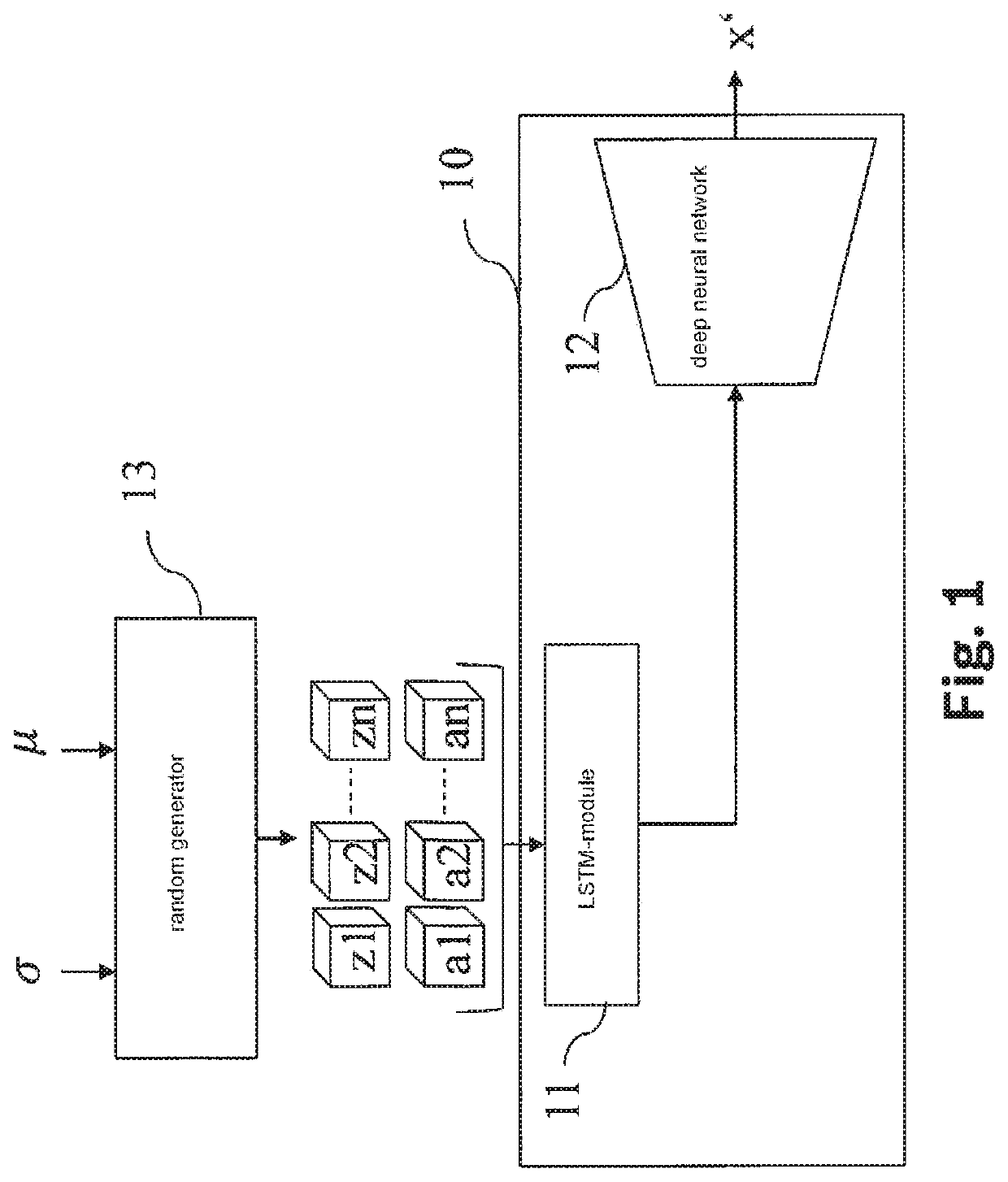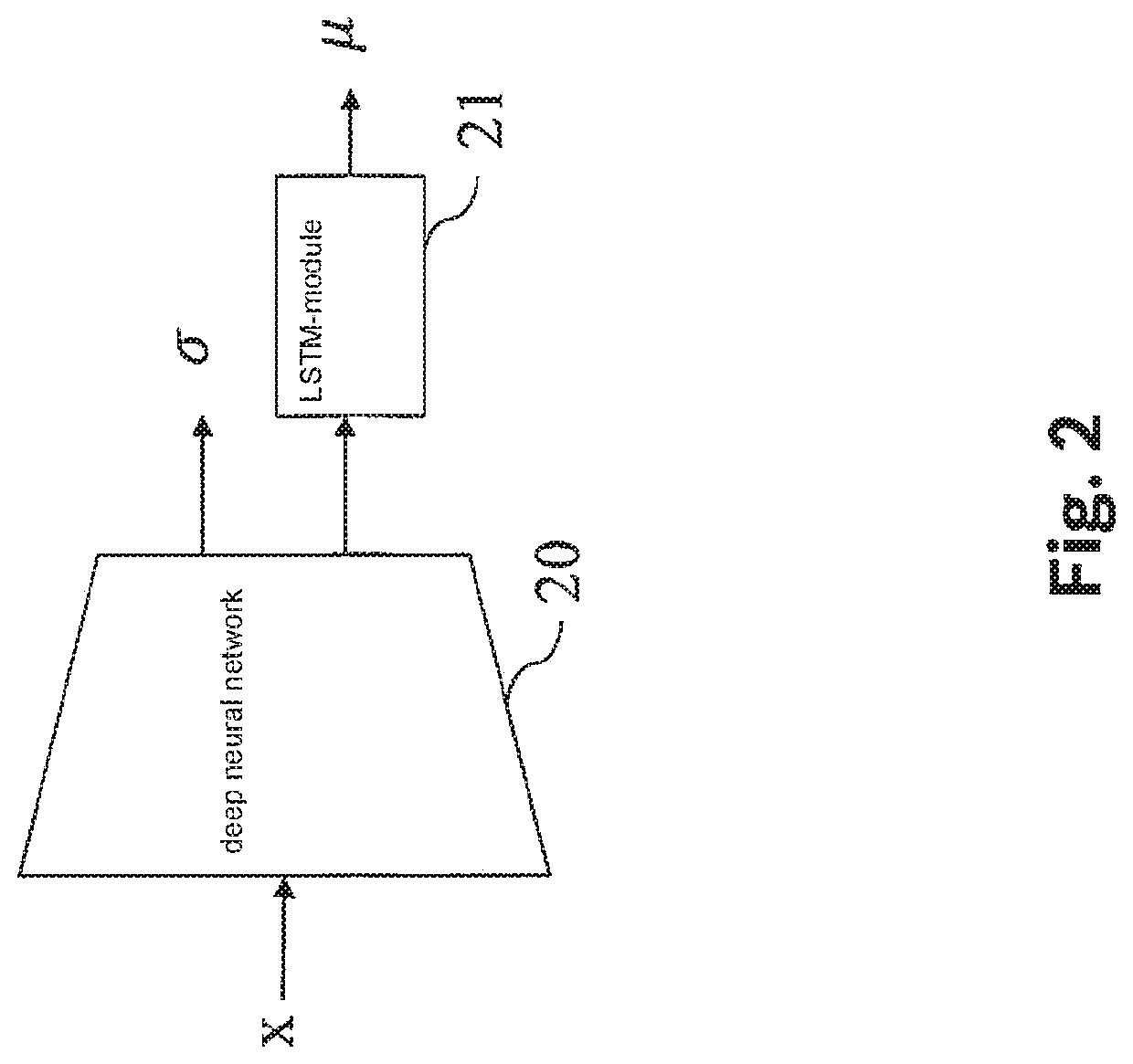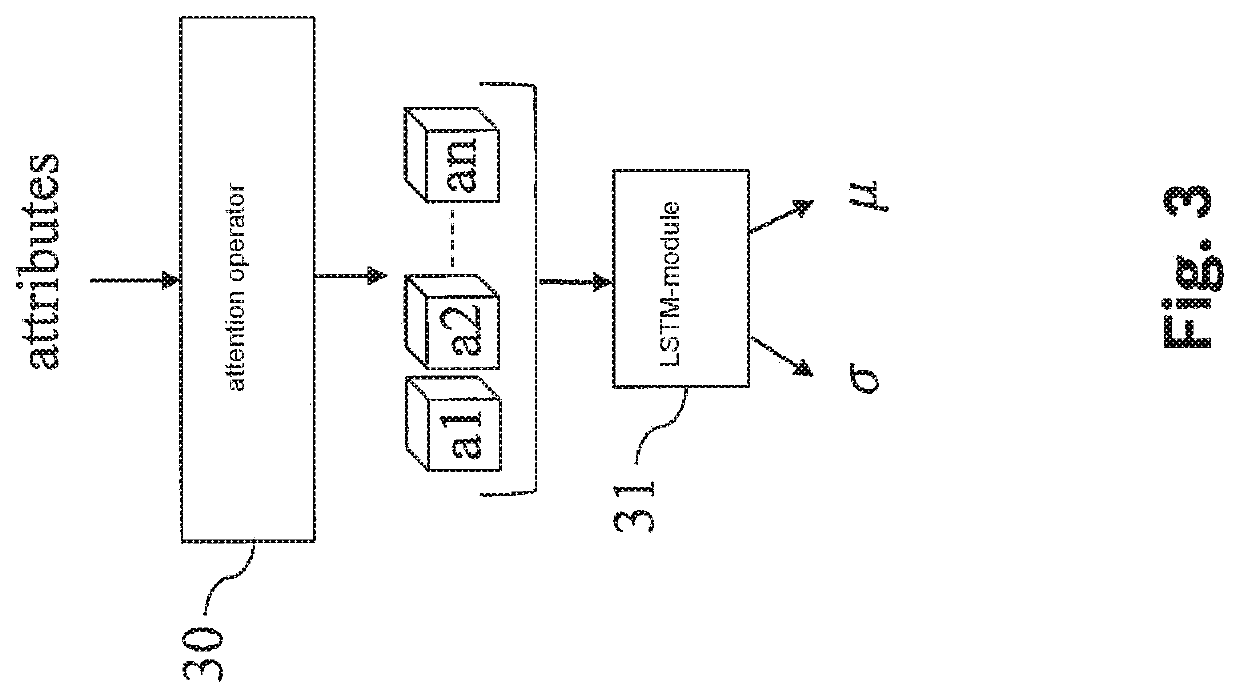Method, apparatus and computer program for generating an image
a computer program and method technology, applied in the field of methods, apparatus and computer programs for generating images, can solve the problems of difficult acquisition, difficult generation of training images, and inability to determine and store dependencies, so as to prevent a learned bias and improve generalization
- Summary
- Abstract
- Description
- Claims
- Application Information
AI Technical Summary
Benefits of technology
Problems solved by technology
Method used
Image
Examples
Embodiment Construction
[0026]FIG. 1 shows an embodiment of a synthetic image generation system (10) that comprises a LSTM-module (11) that is connected to a deep neural network (12). The LSTM-module (11) receives as input values a plurality of pairs of at least a first value (z) and at least an attention weight (a). The first values (z) characterize properties of the image (x′) that is to be generated, e.g., at least objects and / or colors. Said pairs of input values are sequentially propagated through the LSTM-module (11). The outputted values of the LSTM-module (11) are grouped together as an input value for the deep neural network (12) and propagated through the deep neural network (12). The deep neural network (12) outputs then a synthetic image (x′).
[0027]The first values (z) are sampled from the predefined, preferably multidimensional, probability distribution that is characterized by at least the two parameters (σ, μ). Alternatively, the first values (z) are sampled from several different predefined...
PUM
 Login to View More
Login to View More Abstract
Description
Claims
Application Information
 Login to View More
Login to View More - R&D
- Intellectual Property
- Life Sciences
- Materials
- Tech Scout
- Unparalleled Data Quality
- Higher Quality Content
- 60% Fewer Hallucinations
Browse by: Latest US Patents, China's latest patents, Technical Efficacy Thesaurus, Application Domain, Technology Topic, Popular Technical Reports.
© 2025 PatSnap. All rights reserved.Legal|Privacy policy|Modern Slavery Act Transparency Statement|Sitemap|About US| Contact US: help@patsnap.com



